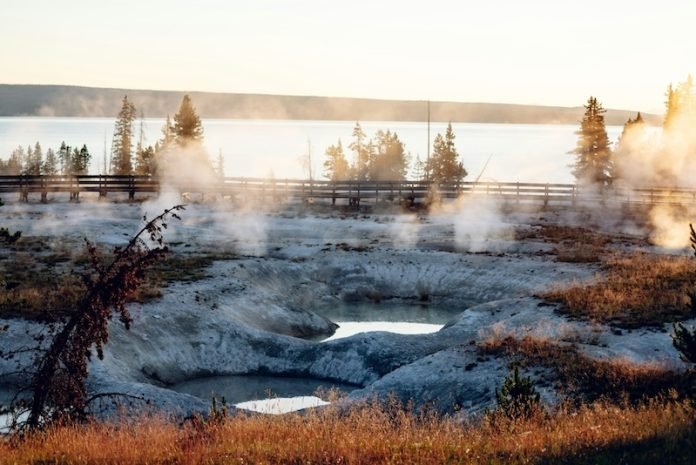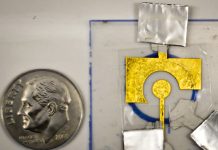
In an exciting leap forward in our understanding of life’s origins, researchers from Newcastle University have ventured back in time, more than 3.5 billion years, to the ancient hot springs of primordial Earth.
Funded by the UK’s Natural Environmental Research Council, this team of scientists has made a groundbreaking discovery that could illuminate how the first living systems emerged from the inert geological materials of our young planet.
The study, published in the esteemed journal Communications Earth & Environment, presents compelling evidence that a concoction of hydrogen, bicarbonate, and iron-rich magnetite, under conditions similar to mild hydrothermal vents, can lead to the formation of a spectrum of organic molecules.
Among these are fatty acids, which are crucial for the development of cell membranes, stretching up to 18 carbon atoms in length.
This discovery is pivotal, as it suggests a plausible pathway for how inorganic chemicals might have assembled into the complex organic structures necessary for life.
Fatty acids are particularly significant because of their dual nature, part of the molecule attracts water while another part repels it.
This unique property enables them to form cell-like compartments in water, which are believed to be the precursors to the first cell membranes.
Understanding where these fatty acids came from has been a longstanding puzzle for scientists exploring the origins of life.
The Newcastle University team, led by Dr. Graham Purvis and Dr. Jon Telling, simulated the ancient ocean’s chemical environment in their laboratory.
They demonstrated that when hydrogen-rich fluids from hydrothermal vents interact with carbon dioxide-rich seawater in the presence of iron-based minerals, organic molecules necessary for primitive cell membranes are produced.
This finding supports the theory that life’s building blocks could have formed in the unique conditions provided by Earth’s early hydrothermal systems.
Dr. Purvis highlighted the importance of cellular compartments in this process, noting their role in isolating internal chemistry from the external environment, thereby concentrating chemicals and facilitating energy production.
These compartments may very well have been the cornerstone of life’s earliest moments, providing a nurturing cradle for the development of life.
The research team believes this study marks the first step in understanding how life originated on our planet.
Their ongoing work aims to uncover how these organic molecules transitioned from being stuck to mineral surfaces to forming free-floating, membrane-bound compartments—potential “protocells” that may have evolved into the first cellular life forms.
Perhaps most intriguingly, the researchers suggest that similar membrane-creating reactions could still be occurring beneath the icy surfaces of moons in our solar system, hinting at the possibility of life’s origins beyond Earth.
This research not only deepens our understanding of life’s beginnings on our own planet but also opens the door to the prospect of discovering life in distant, seemingly inhospitable worlds.
This breakthrough underscores the intricate link between geology and biology in the narrative of life’s evolution and highlights the incredible journey from simple chemical reactions to the complex web of life that covers Earth today.
The research findings can be found in Communications Earth & Environment.
Copyright © 2024 Knowridge Science Report. All rights reserved.



